*NURSING > EXAM > ATI Med Surg test questions Fluid and Electrolytes, 100% Correct Answers, Download to Score A (All)
ATI Med Surg test questions Fluid and Electrolytes, 100% Correct Answers, Download to Score A
Document Content and Description Below
ATI Med Surg test questions Fluid and Electrolytes, 100% Correct Answers, Download to Score A-A nurse is admitting a client who reports nausea, vomiting, and weakness. The client has dry oral mucous m... embranes and blood pressure 102/64 mm Hg. Which of the following findings should the nurse identify as manifestations of fluid volume deficit? (Select all that apply.) A. Decreased skin turgor B. Concentrated urine C. Bradycardia D. Low-grade fever E. Tachypnea - A; Decreased skin turgor is a manifestation present with fluid volume deficit. Skin turgor is decreased due to the lack of fluid within the body and results in dryness of the skin. B; Concentrated urine is a manifestation present with fluid volume deficit. Urine is concentrated due to lack of fluid in the vascular system, causing a decreased profusion of the kidneys resulting in an increased urine specific gravity. D; Low-grade fever is a manifestation present with fluid volume deficit. Low-grade fever is one of the body's ways to maintain homeostasis to compensate for lack of fluid within the body. E; Tachypnea is a manifestation present with fluid volume deficit. Increased respirations are the body's way to obtain oxygen due to the lack of fluid volume within the body. A nurse is admitting an older adult client who reports a weight gain of 2.3 kg (5 lb) in 48 hr. Which of the following manifestations of fluid volume excess should the nurse expect? (Select all that apply.) A. Dyspnea B. Edema C. Bradycardia D. Hypertension E. Weakness - A; Dyspnea is a manifestation present with fluid volume excess. Dyspnea is due to an excess of fluids within the body and lungs, and the client is struggling to breathe to obtain oxygen. B; Weight gain can be a result of edema. D; Blood pressure rises as the heart must work harder due to the excess fluid. E; Weakness is due to the excess fluid that is retained, which depletes energy and increases the workload for the body. A nurse is assessing a client who is dehydrated. Which of the following findings should the nurse expect? A. Moist skin B. Distended neck veins C. Increased urinary output D. Tachycardia - D; Tachycardia is an attempt to maintain blood pressure, a manifestation of fluid volume deficit. A nurse is caring for a client in a long-term facility who has become weak, confused, and experienced dizziness when standing. The client's temperature is 38.3 degrees C (100.9 degrees F), pulse 92/min, respirations 20/min, and blood pressure 108/60 mm Hg. Which of the following actions should the nurse take? A. Initiate fluid restrictions to limit intake B. Check for peripheral edema C. Encourage the client to ambulate to promote oxygenation D. Monitor for orthostatic hypotension - D; Monitor for orthostatic hypotension because they have manifestations of dehydration due to decreased circulatory volume. A nurse is caring for a client who has a blood sodium level 133 mEg/L and blood potassium level 3.4 mEq/L. The nurse should recognize that which of the following treatments can result in these laboratory findings? A. Three tap water enemas B. 0.9% NaCl solution IV at 50 ml/hr C. 5% dextrose with 0.45% NaCl solution with 20 mEq of K+ IV at 80 mL/hr D. Antibiotic therapy - A; Three tap water enemas can result in a decrease in blood sodium and potassium. Tap water is hypotonic, and gastrointestinal losses are isotonic. This creates an imbalance and solute dilution. A nurse is caring for a client who has a blood potassium 5.4 mEq/L. The nurse should assess for which of the following manifestations? A. ECG changes B. Constipation C. Polyuria D. Paresthesia - A; Assess for ECG changes. Potassium levels can affect the heart and result in arrhythmias. A nurse is caring for a client who has a NGT attached to low intermittent suctioning. The nurse should monitor for which of the following electrolyte imbalances? A. Hypercalcemia B. Hyponatremia C. Hyperphosphatemia D. Hyperkalemia - B; Monitor the client for hyponatremia. Nasogastric losses are isotonic and contain sodium. A nurse is assessing a client who has hyperkalemia. The nurse should identify which of the following conditions as being associated with this electrolyte imbalance? A. Diabetic Ketoacidosis B. heart failure C. Cushing's syndrome D. Thyroidectomy - A; Hyperkalemia is a lab finding associ [Show More]
Last updated: 1 year ago
Preview 1 out of 10 pages

Reviews( 0 )
Document information
Connected school, study & course
About the document
Uploaded On
Jan 26, 2023
Number of pages
10
Written in
Additional information
This document has been written for:
Uploaded
Jan 26, 2023
Downloads
0
Views
25


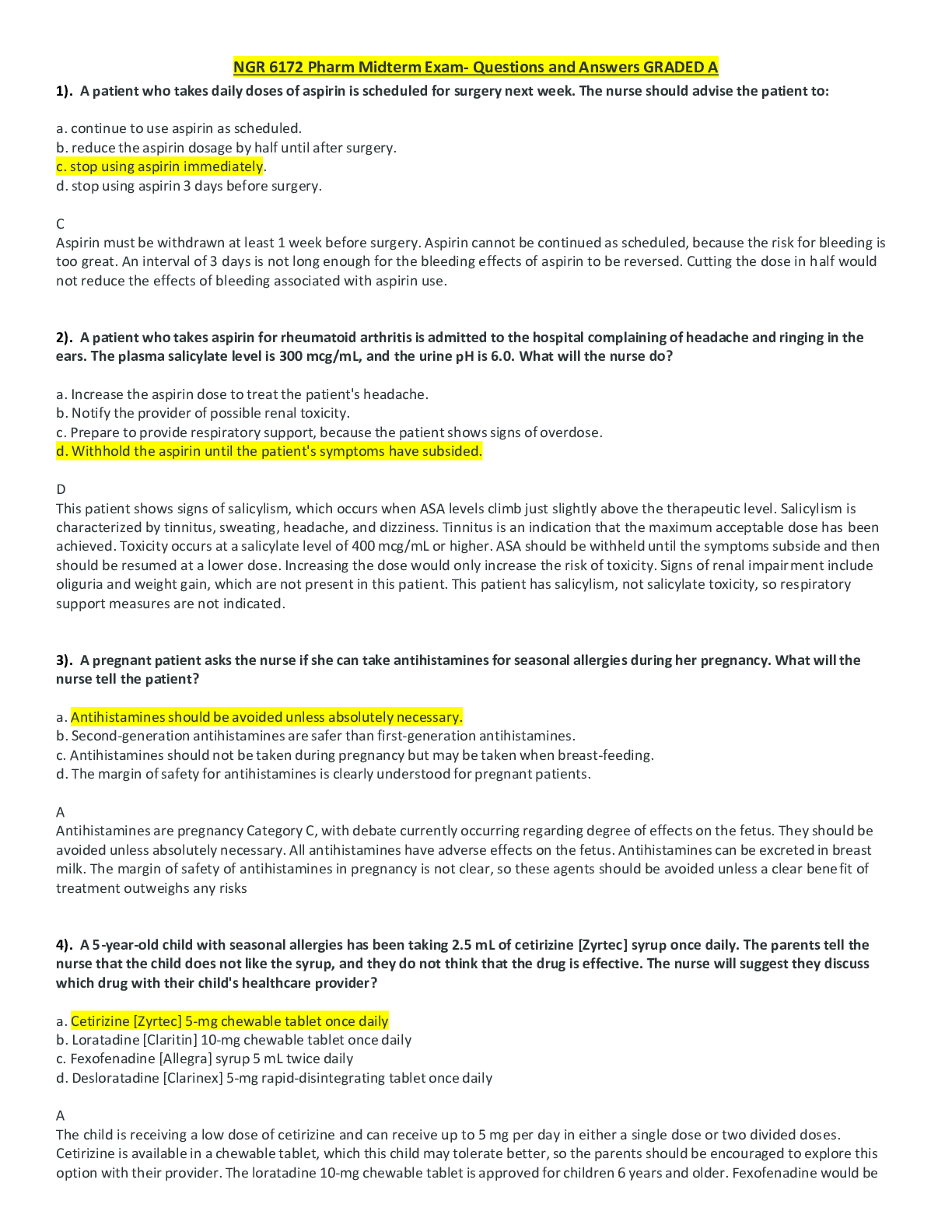

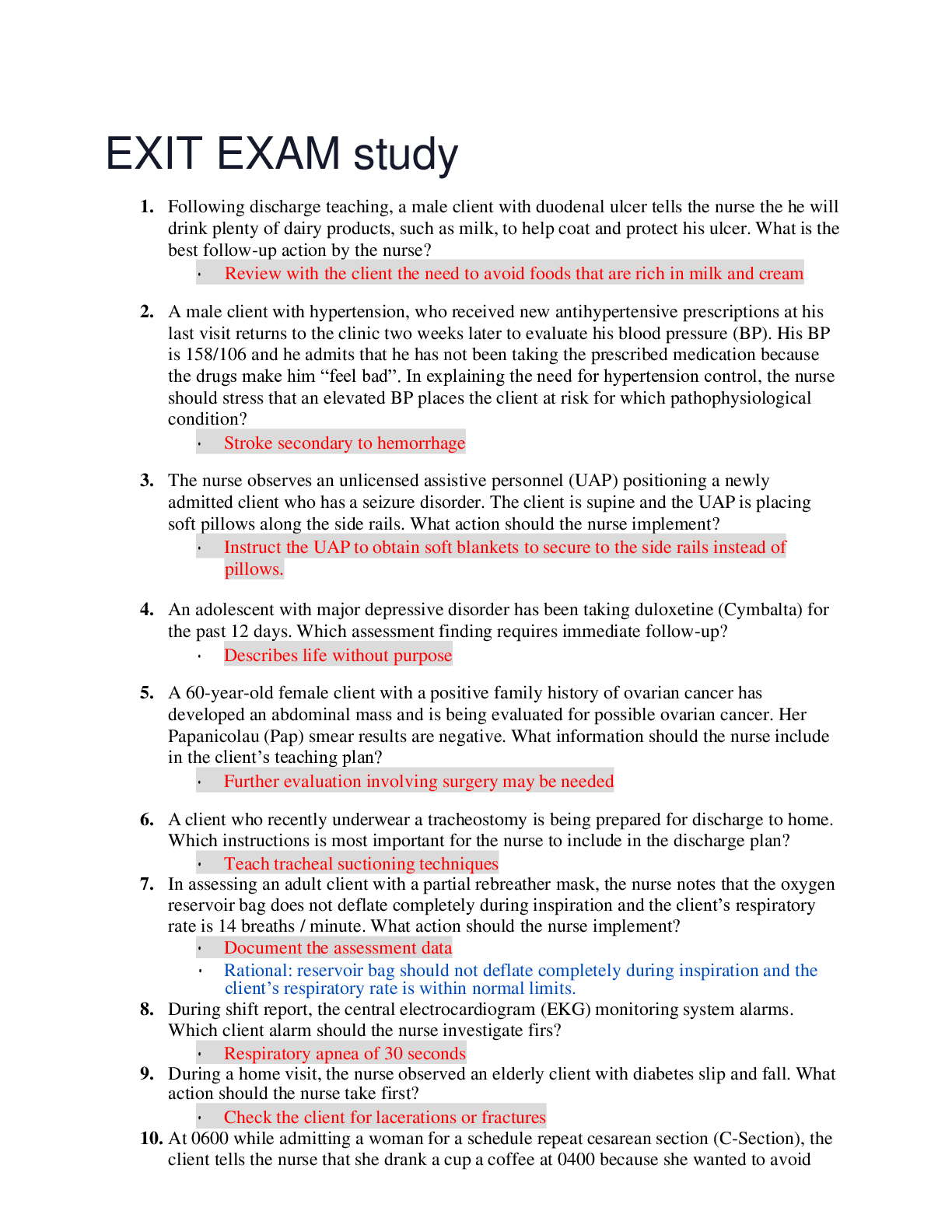
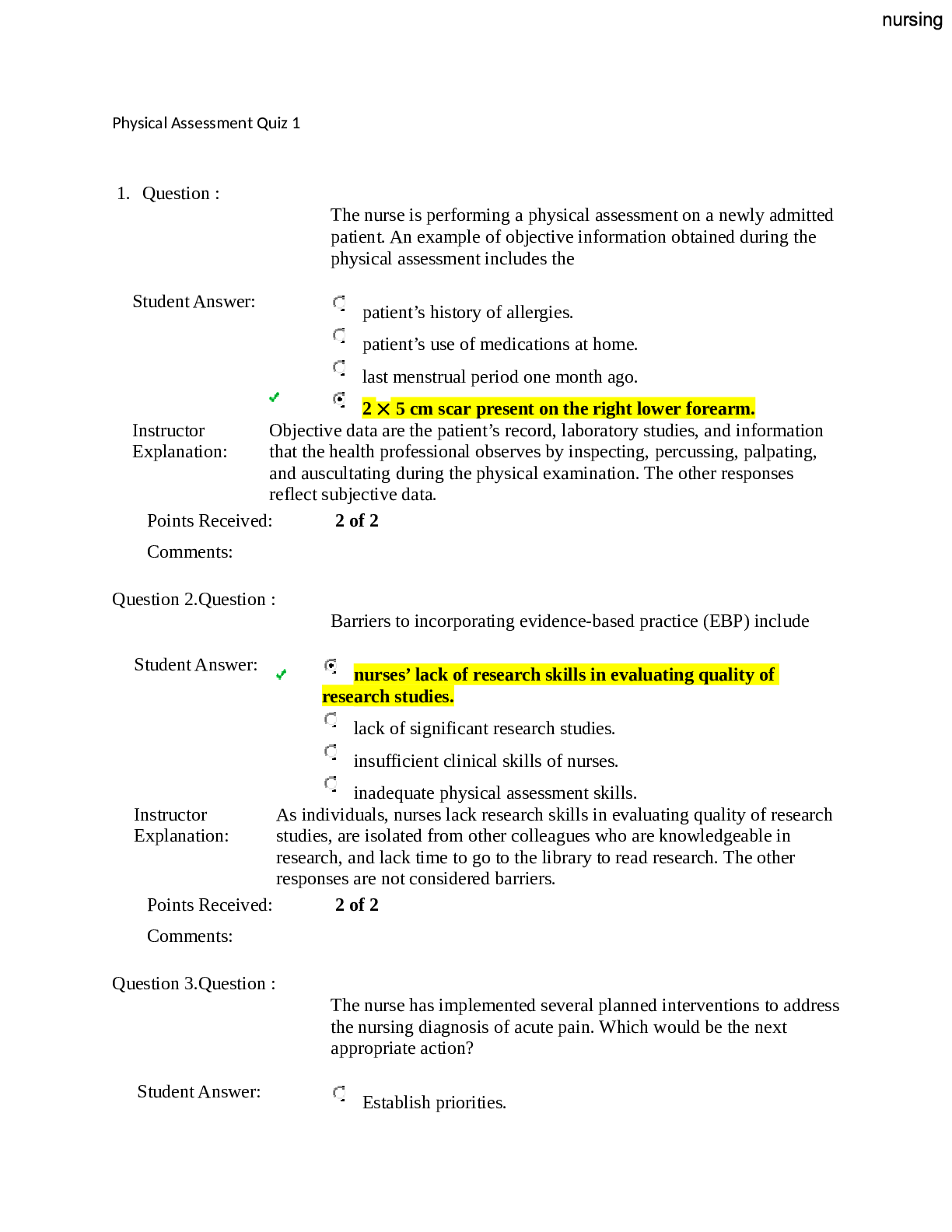
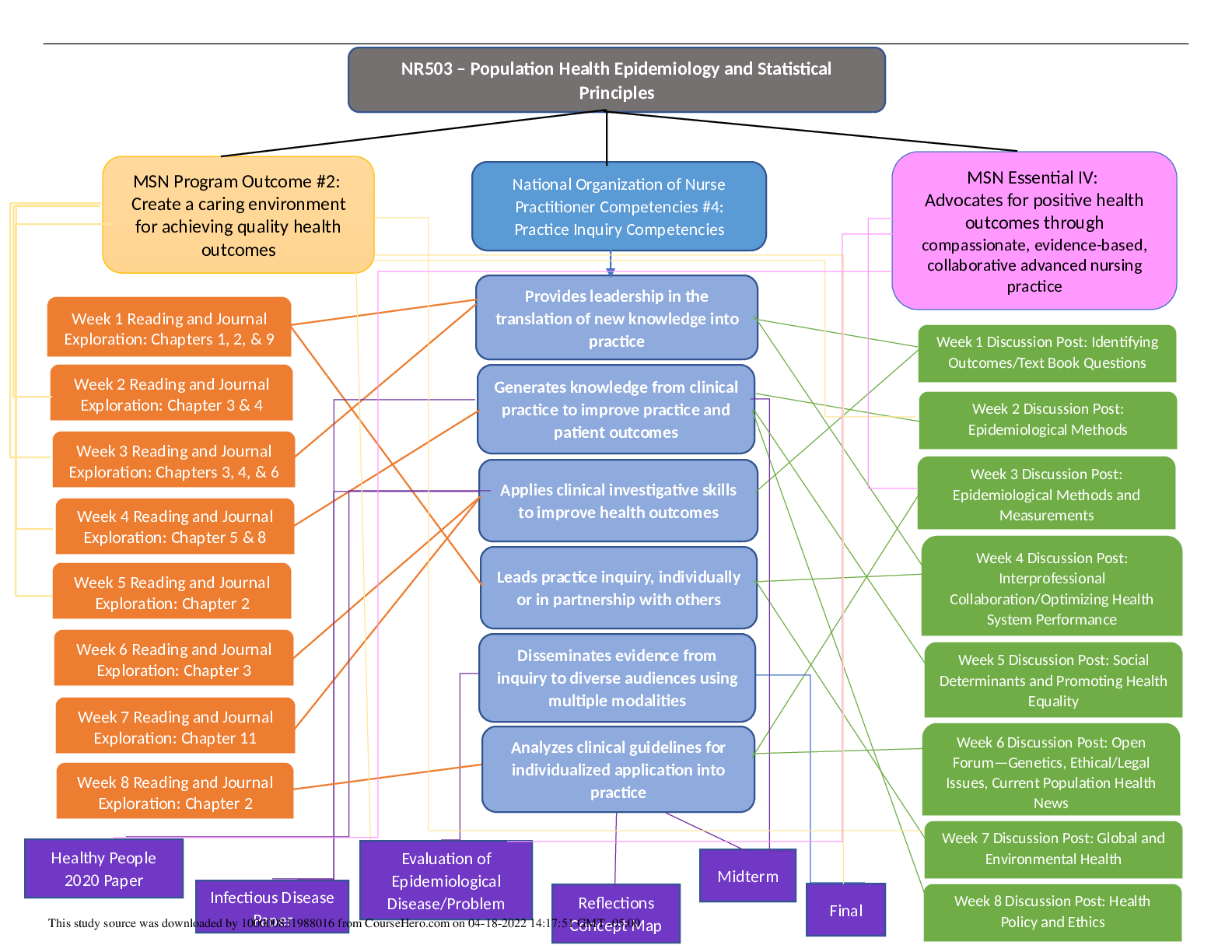

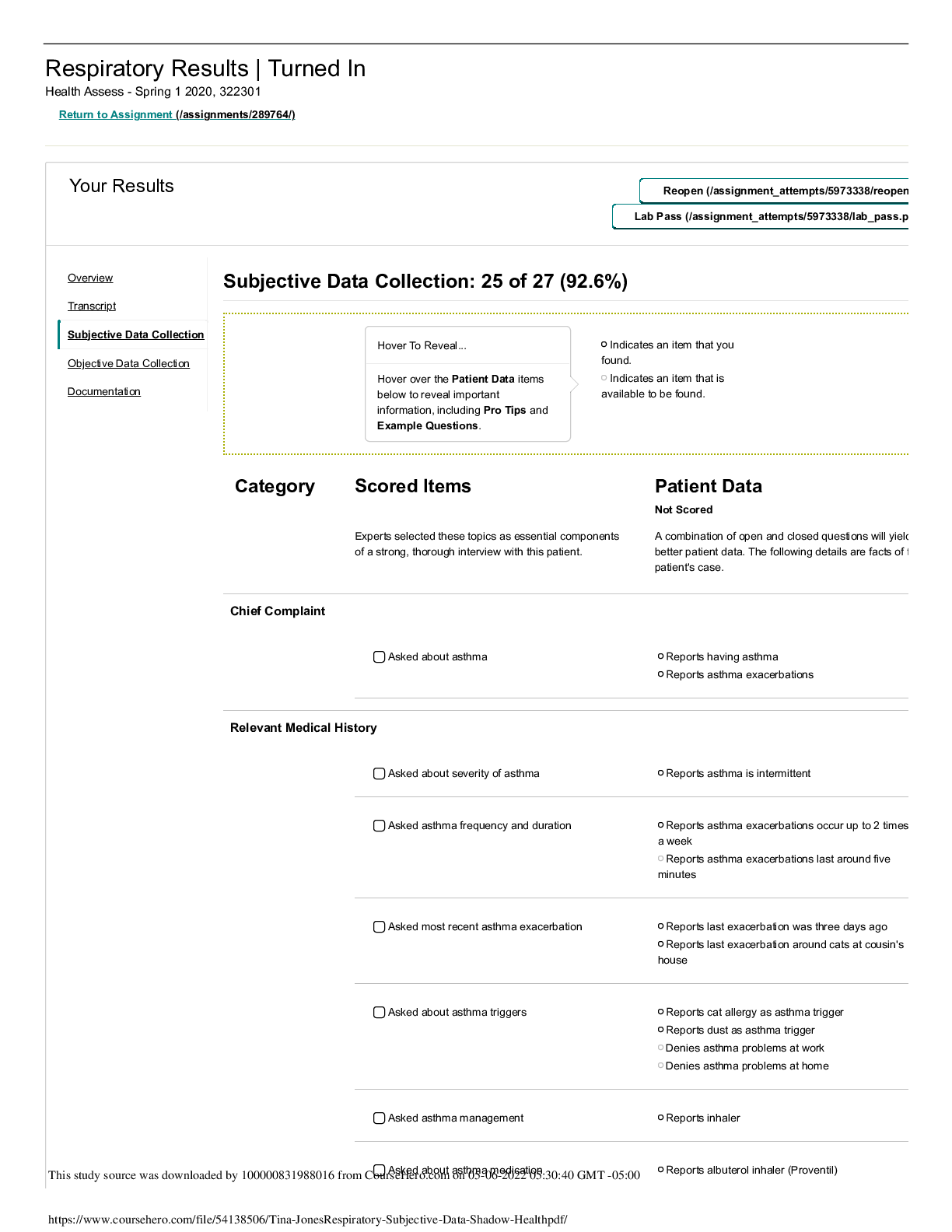
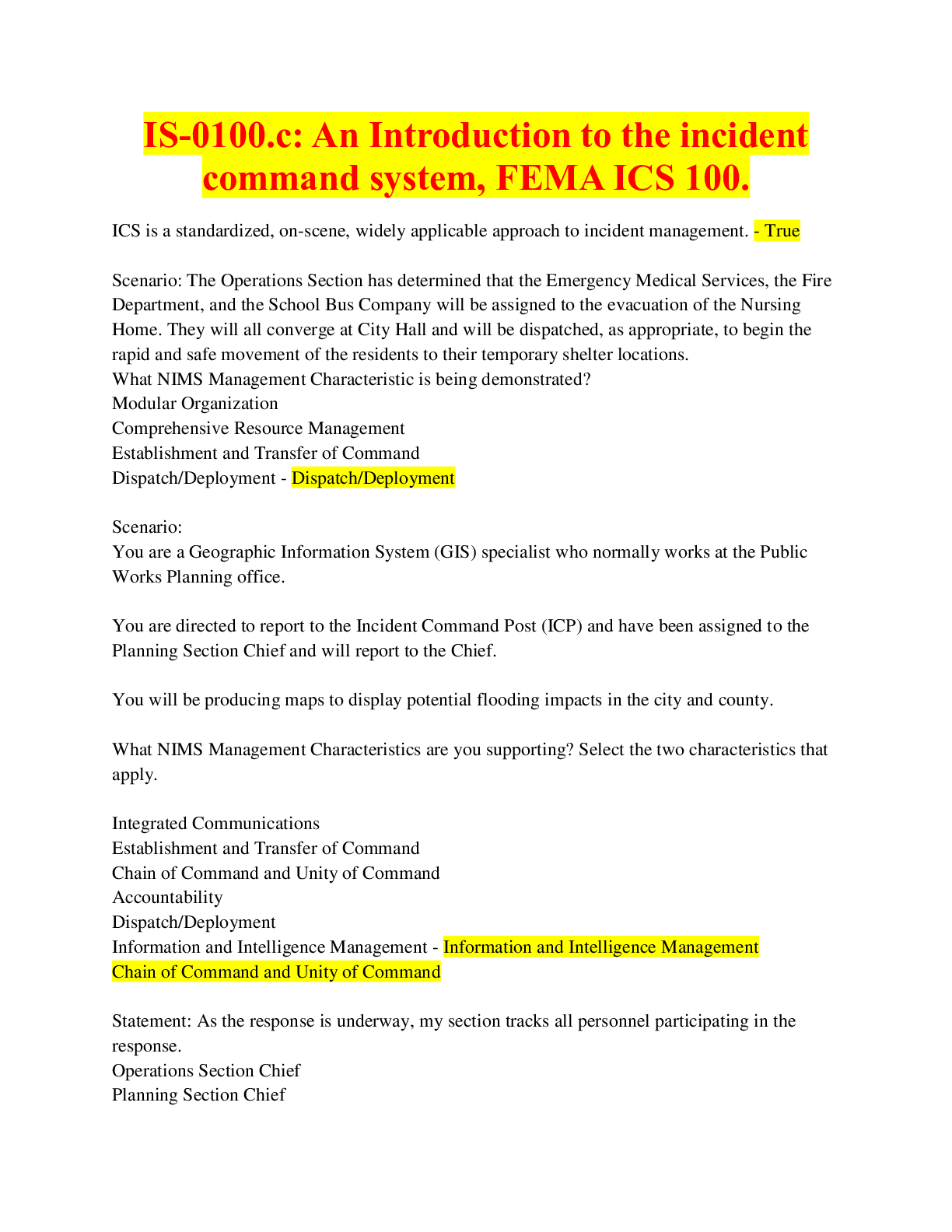

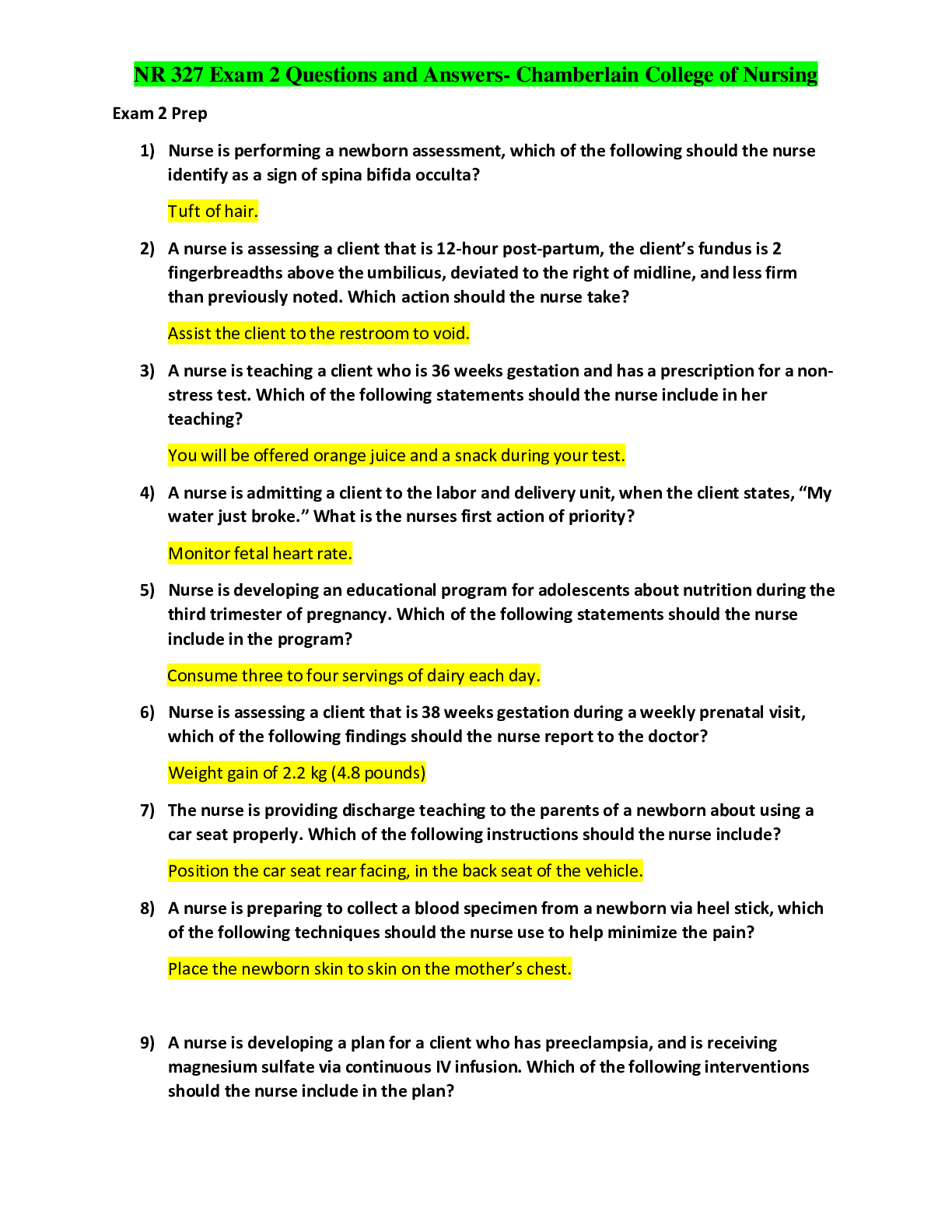

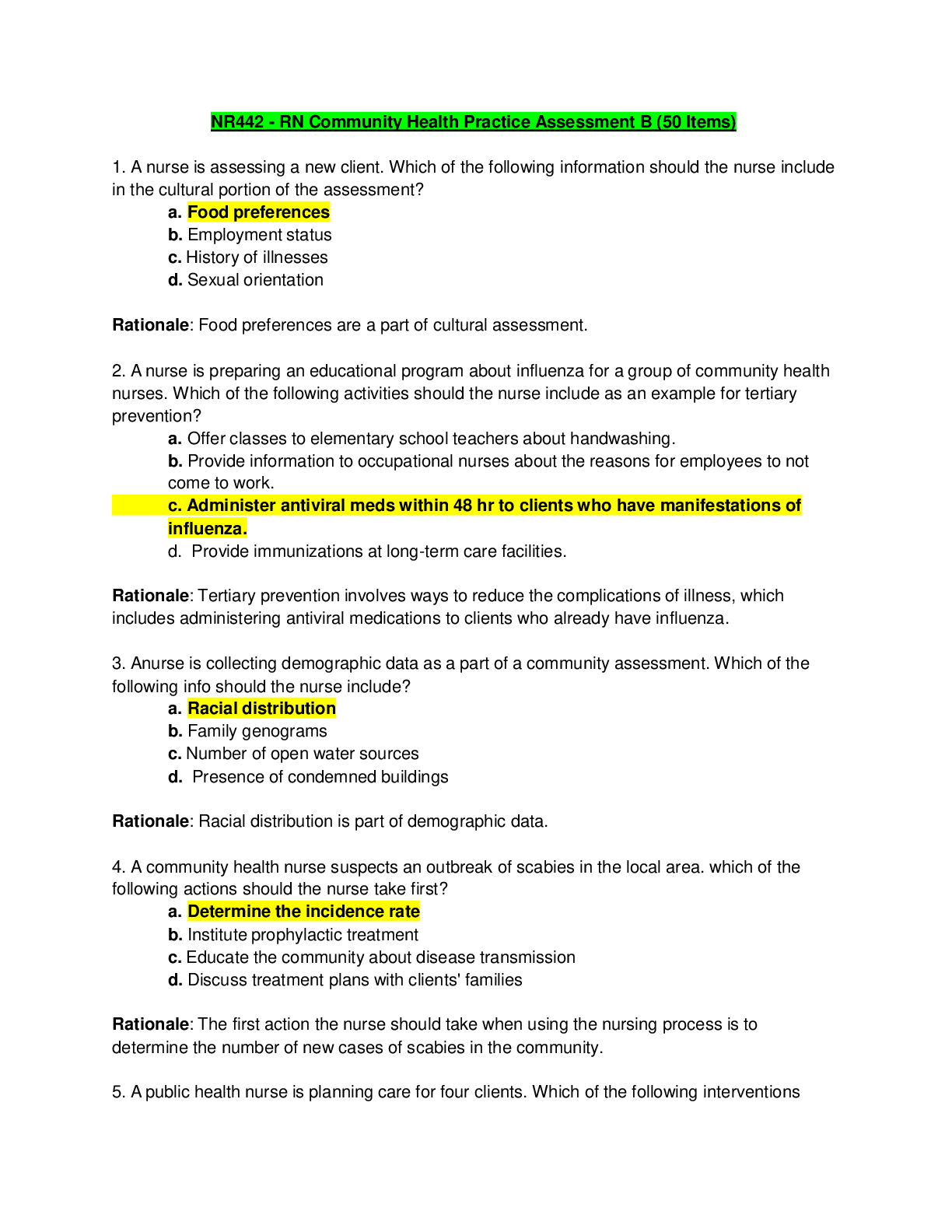
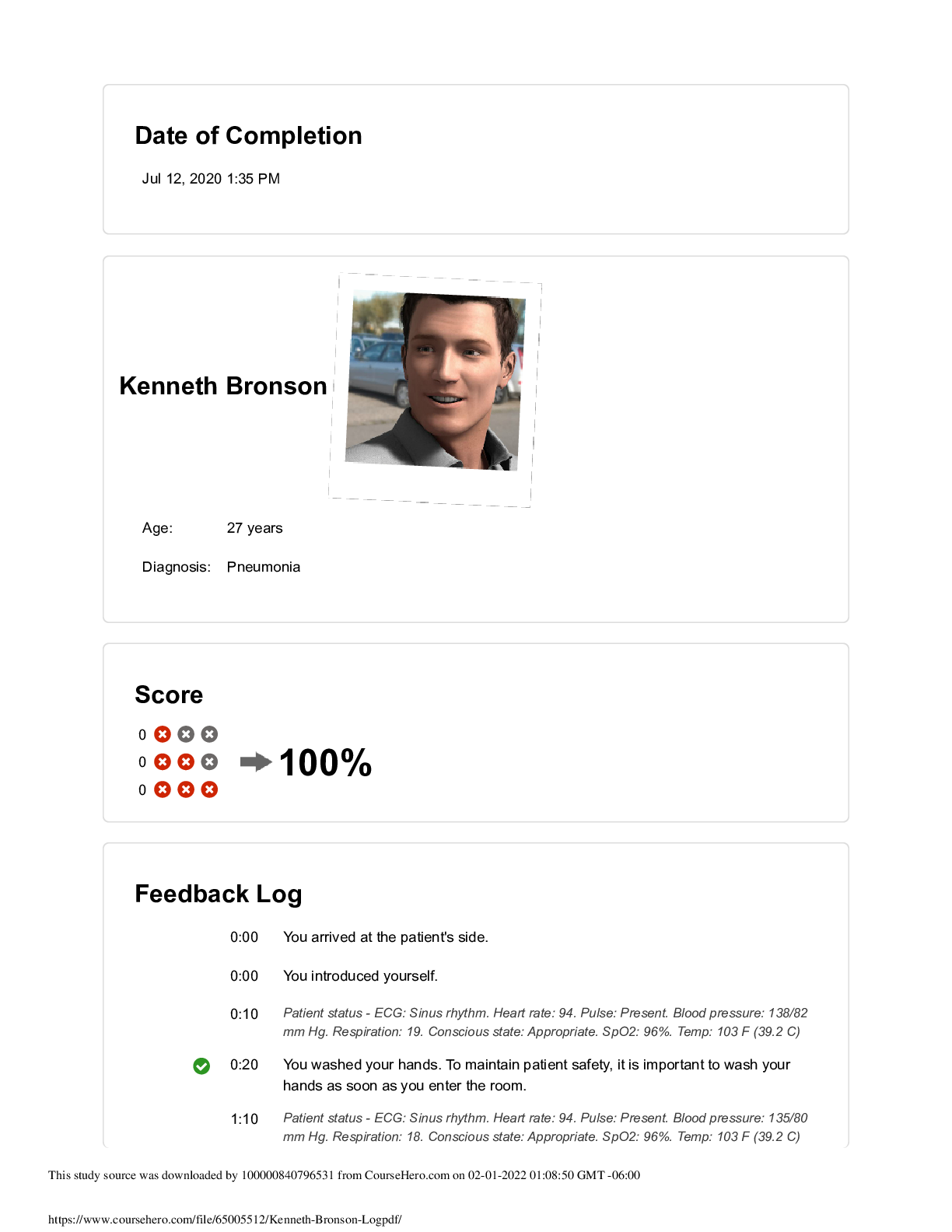
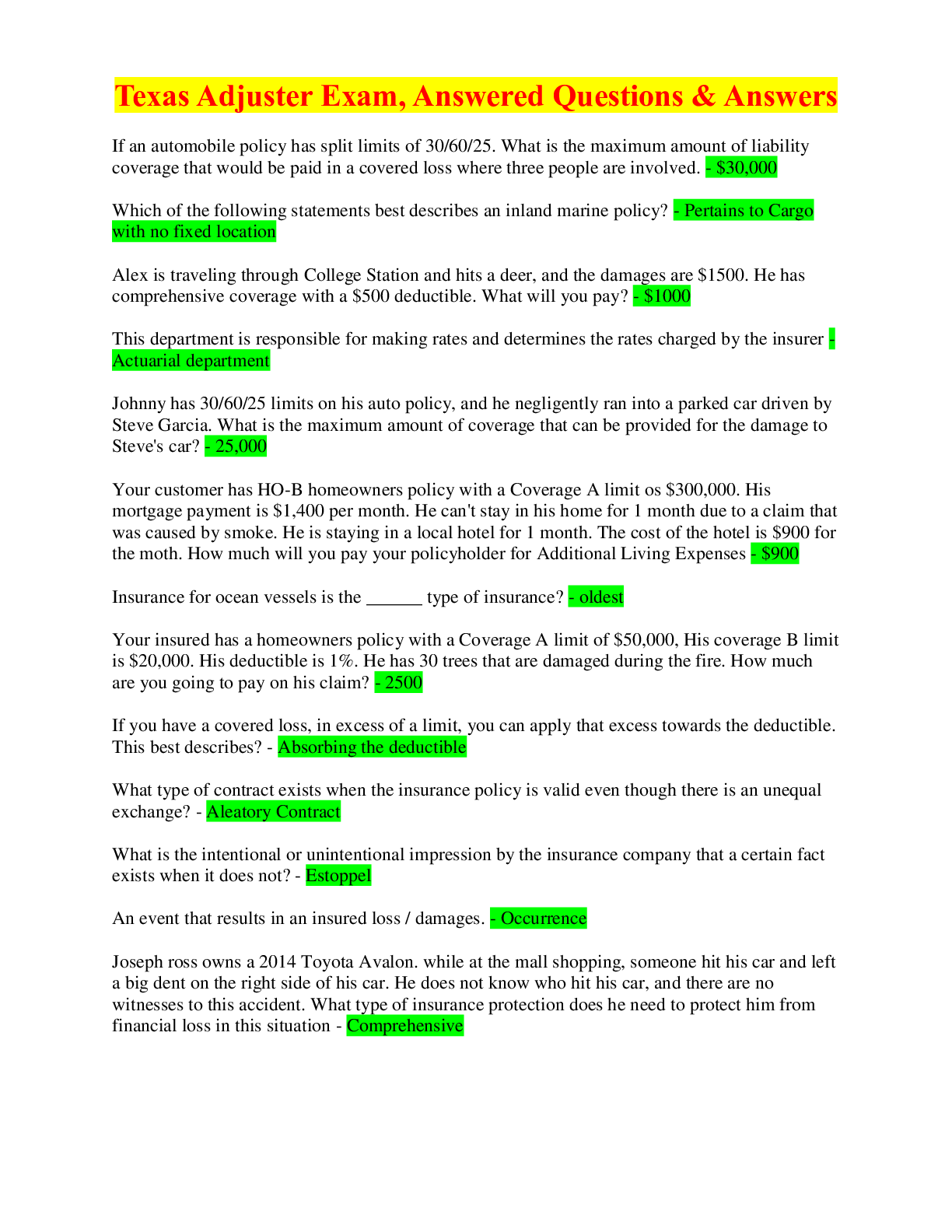
.png)
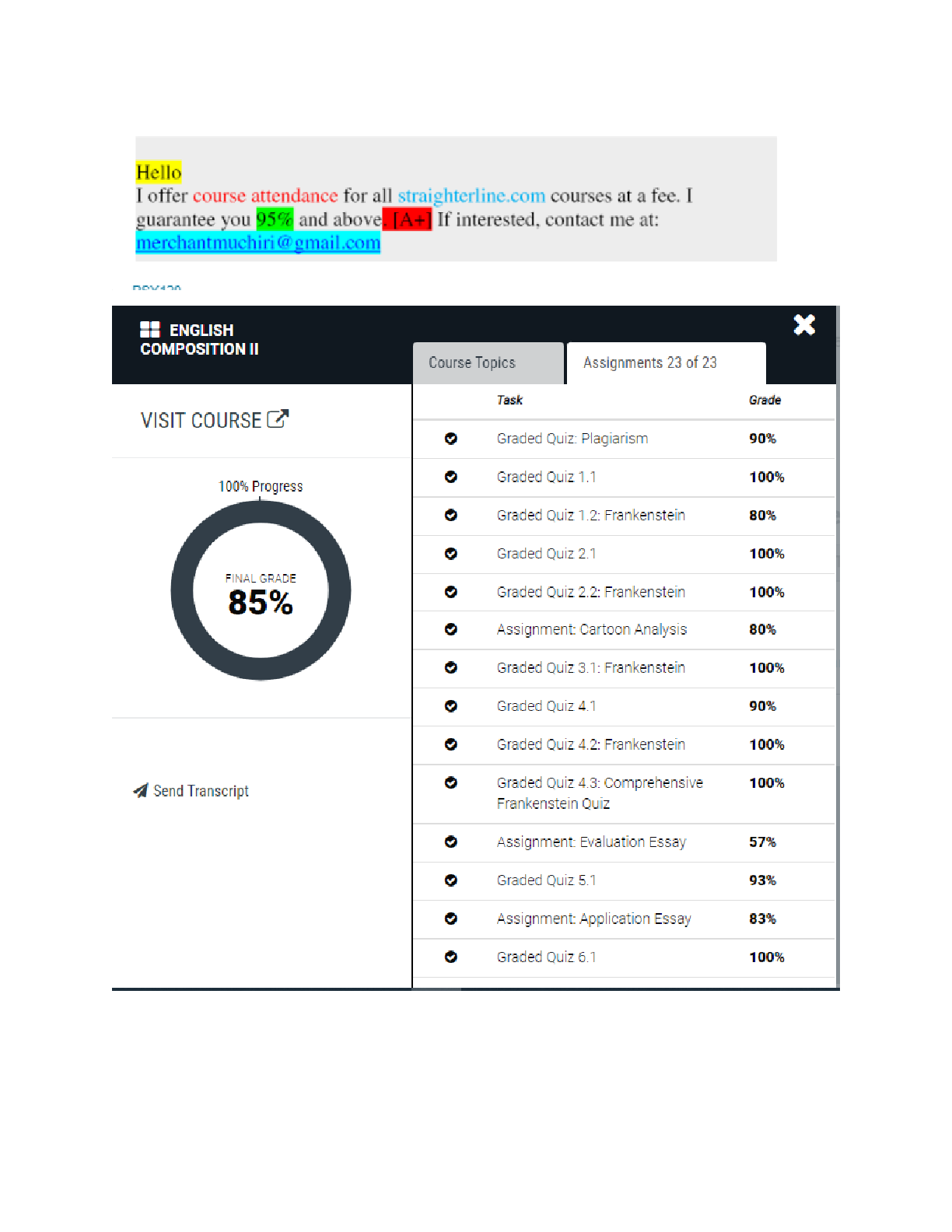
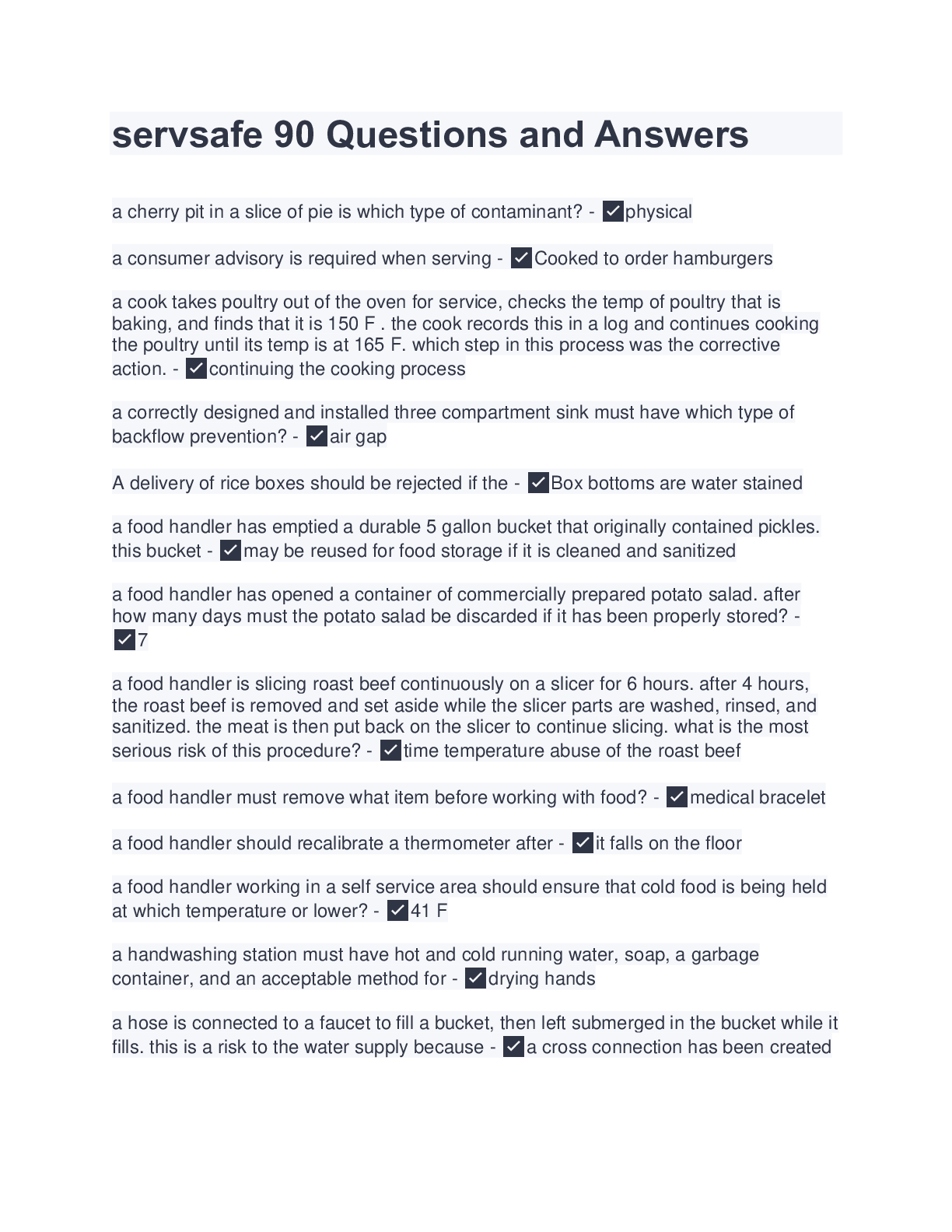
.png)
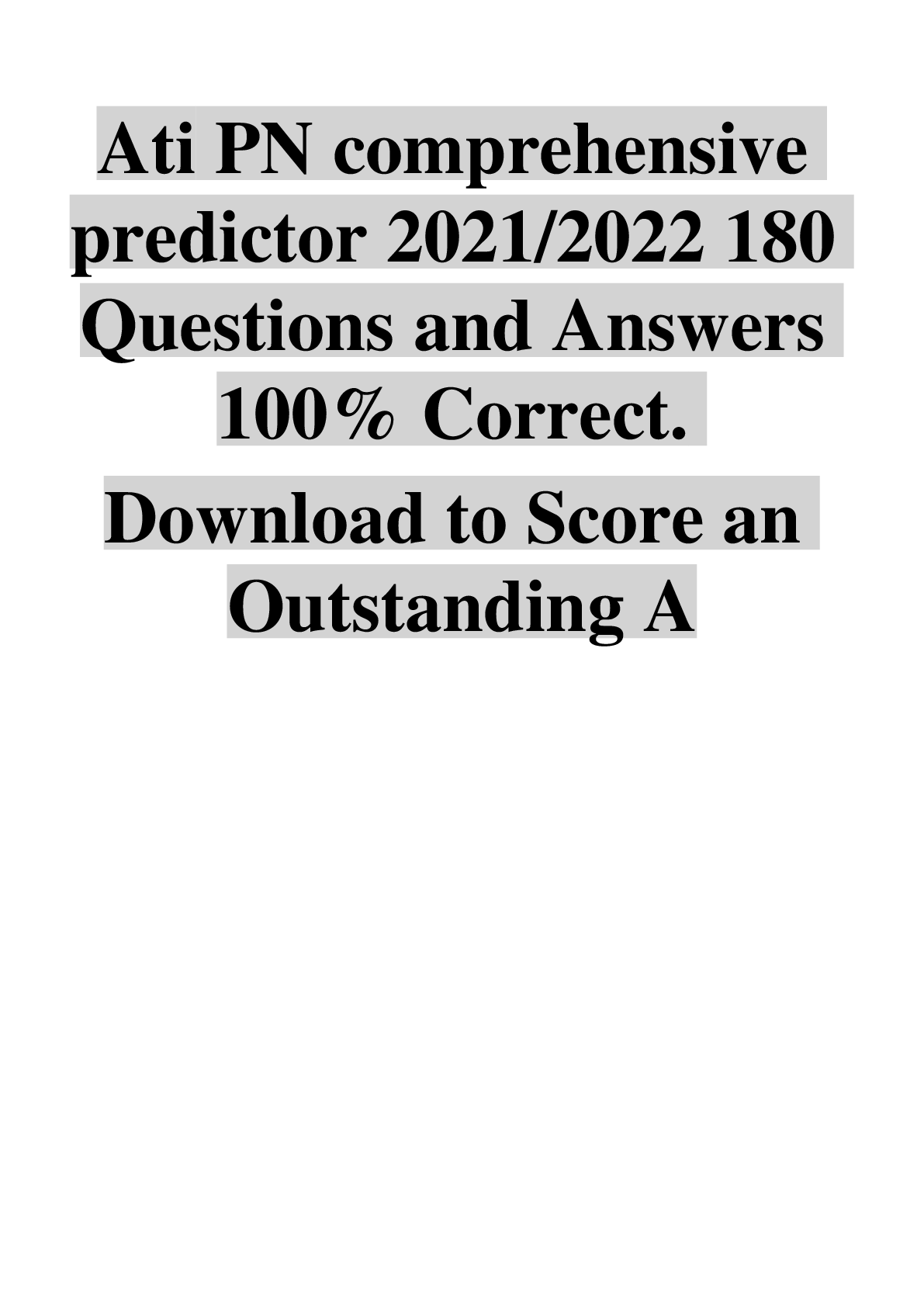

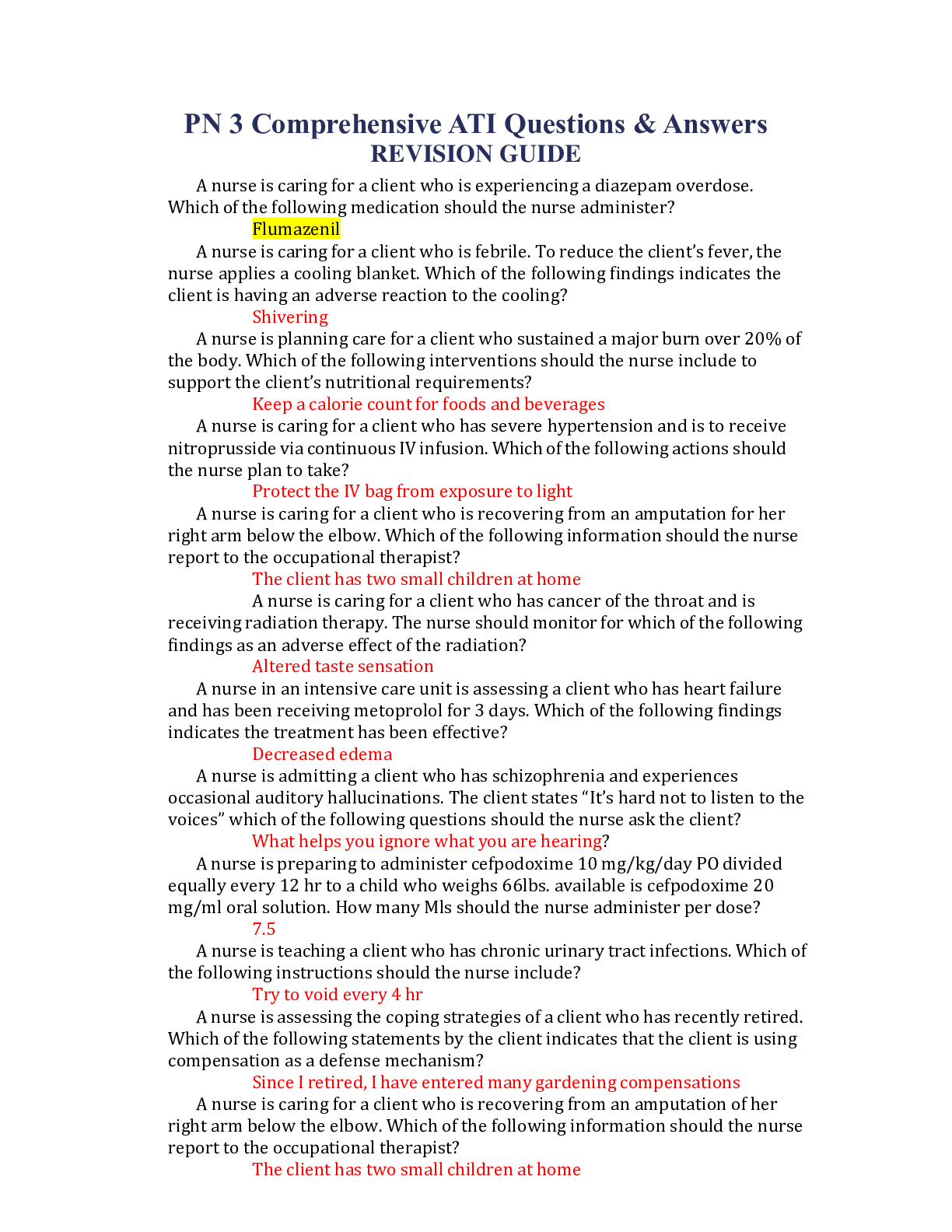
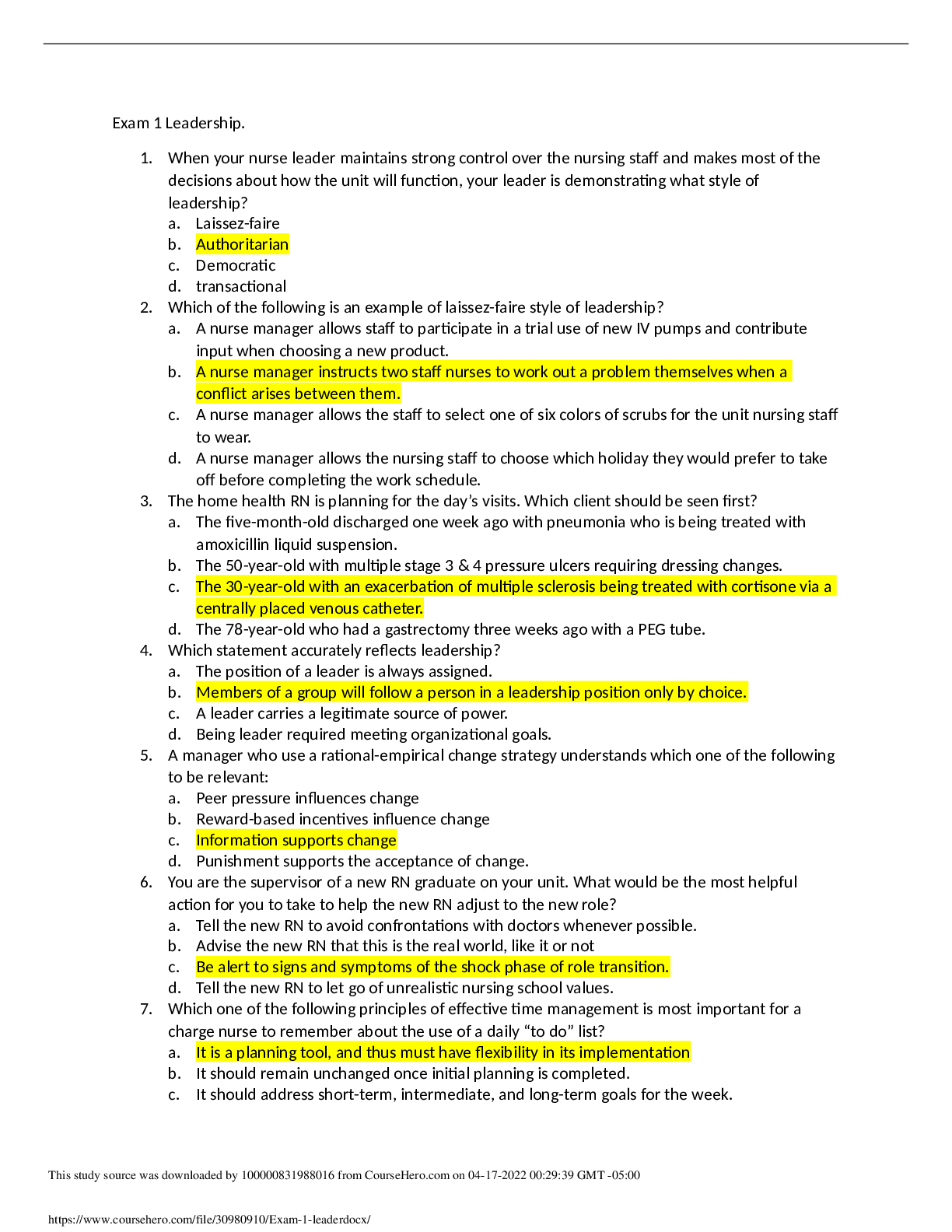
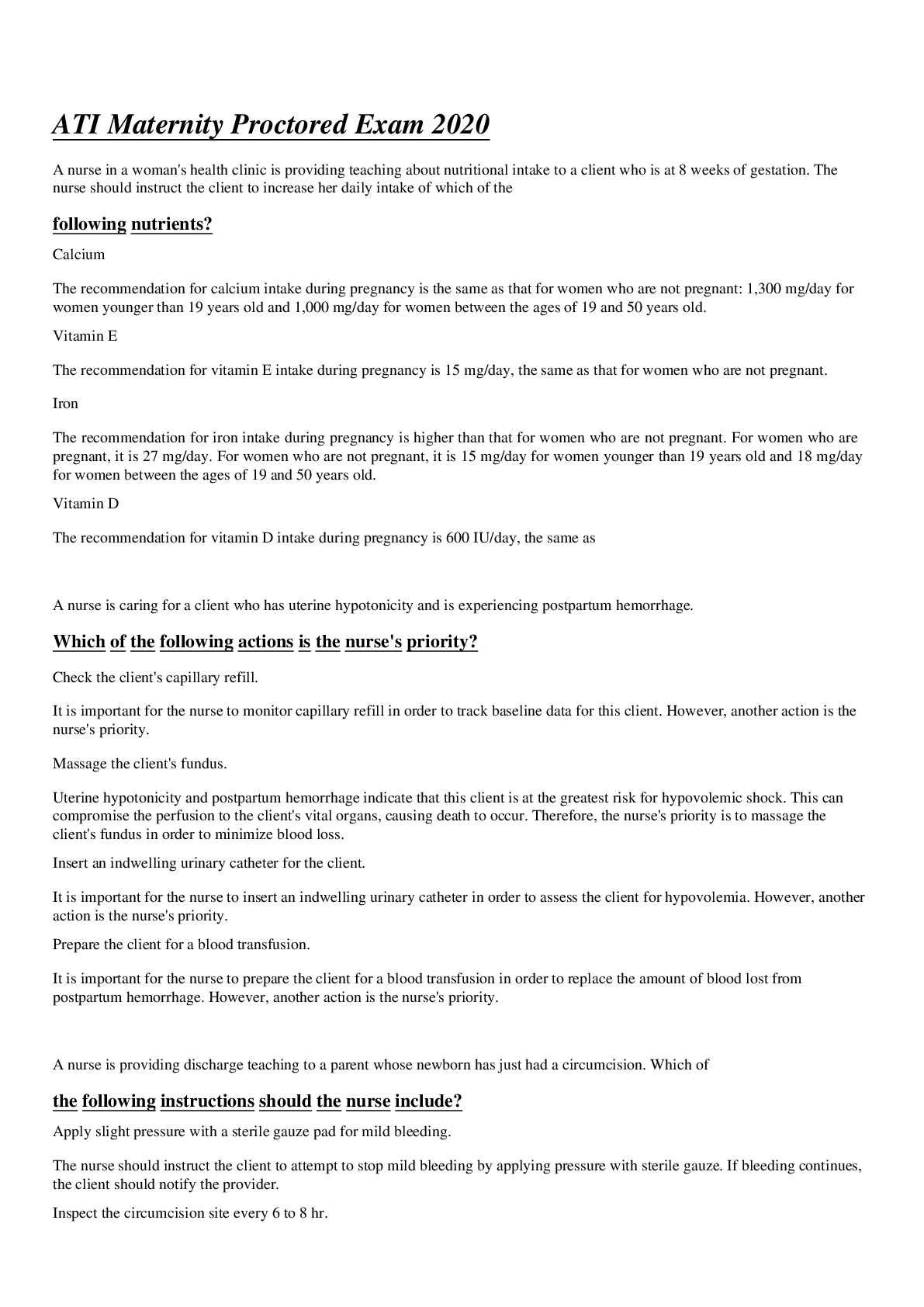
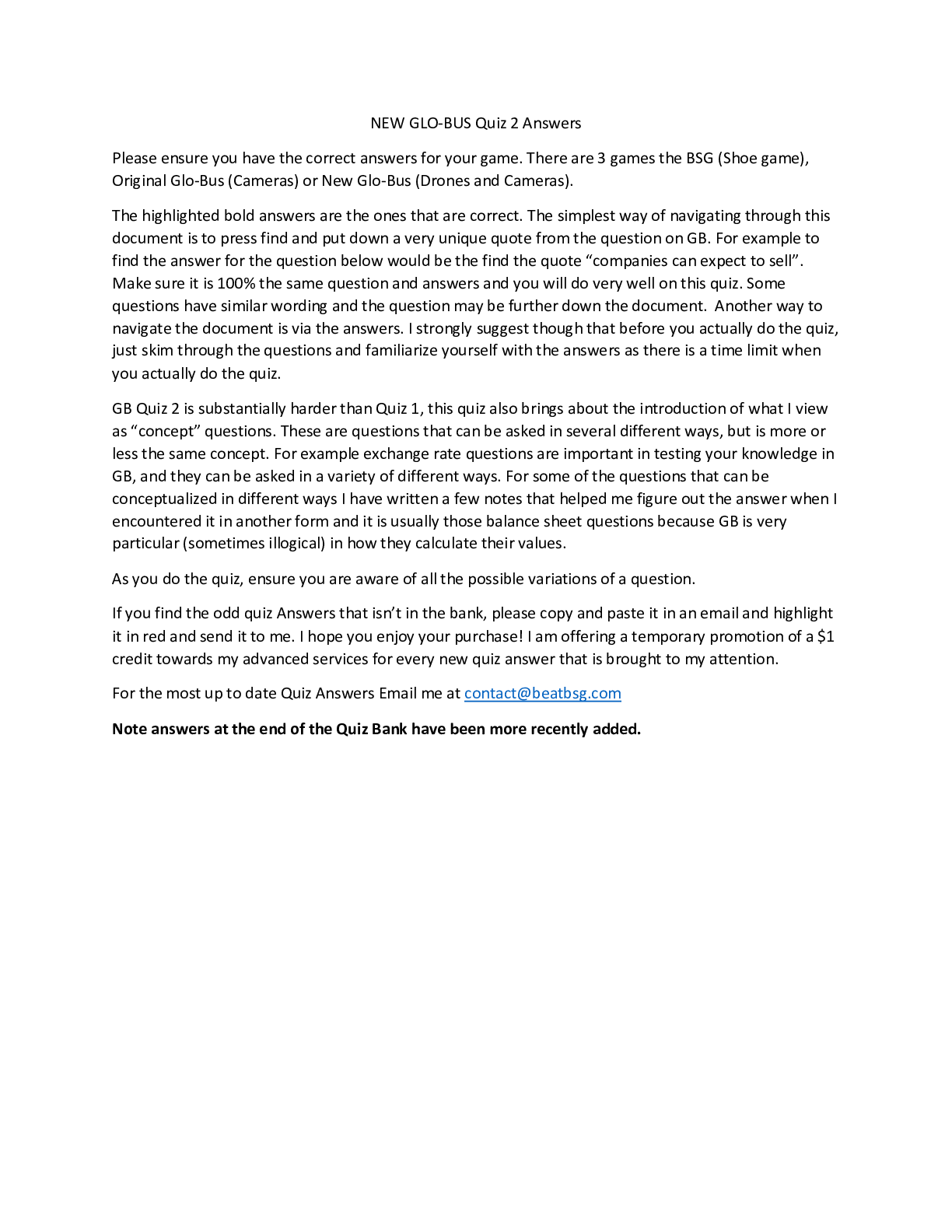
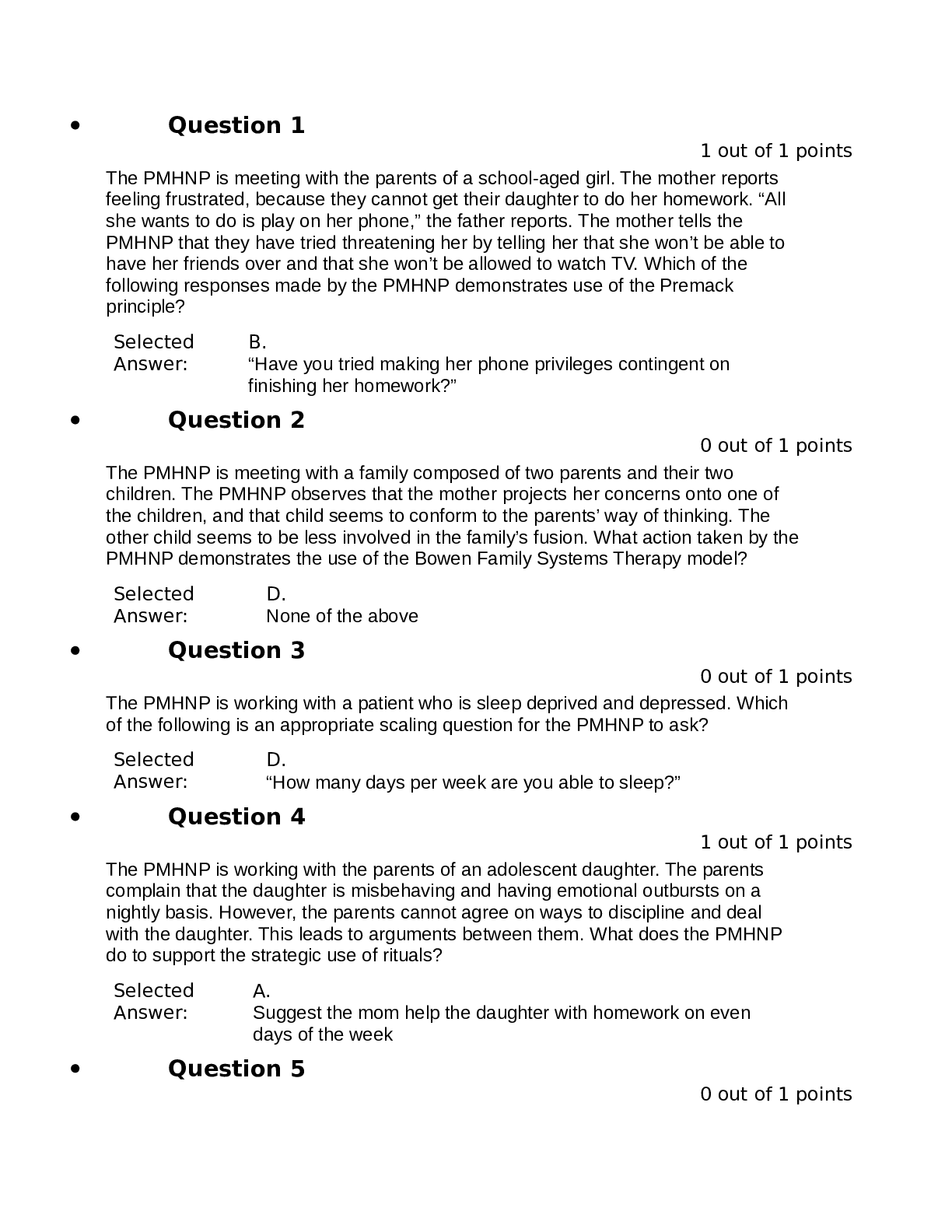
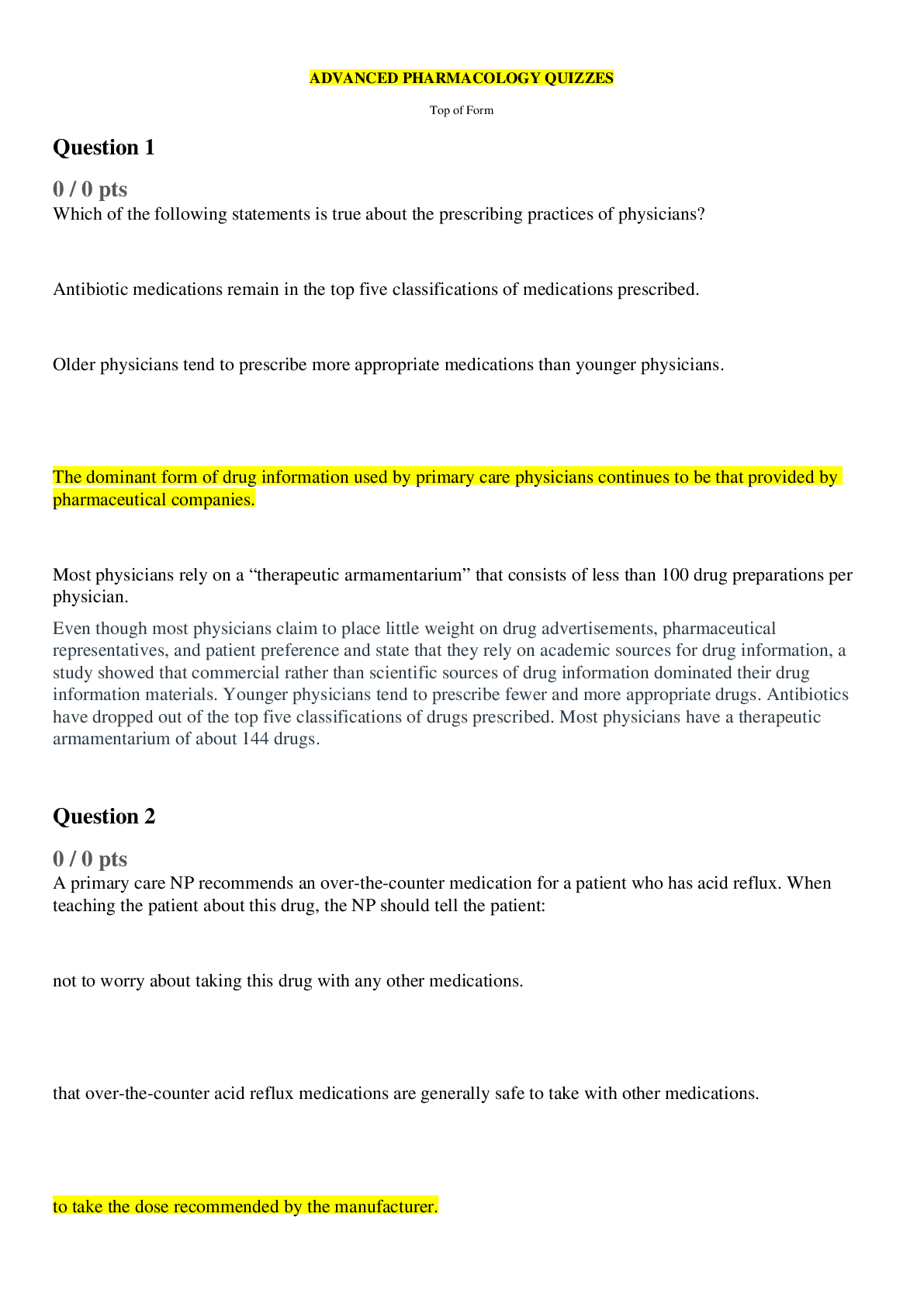
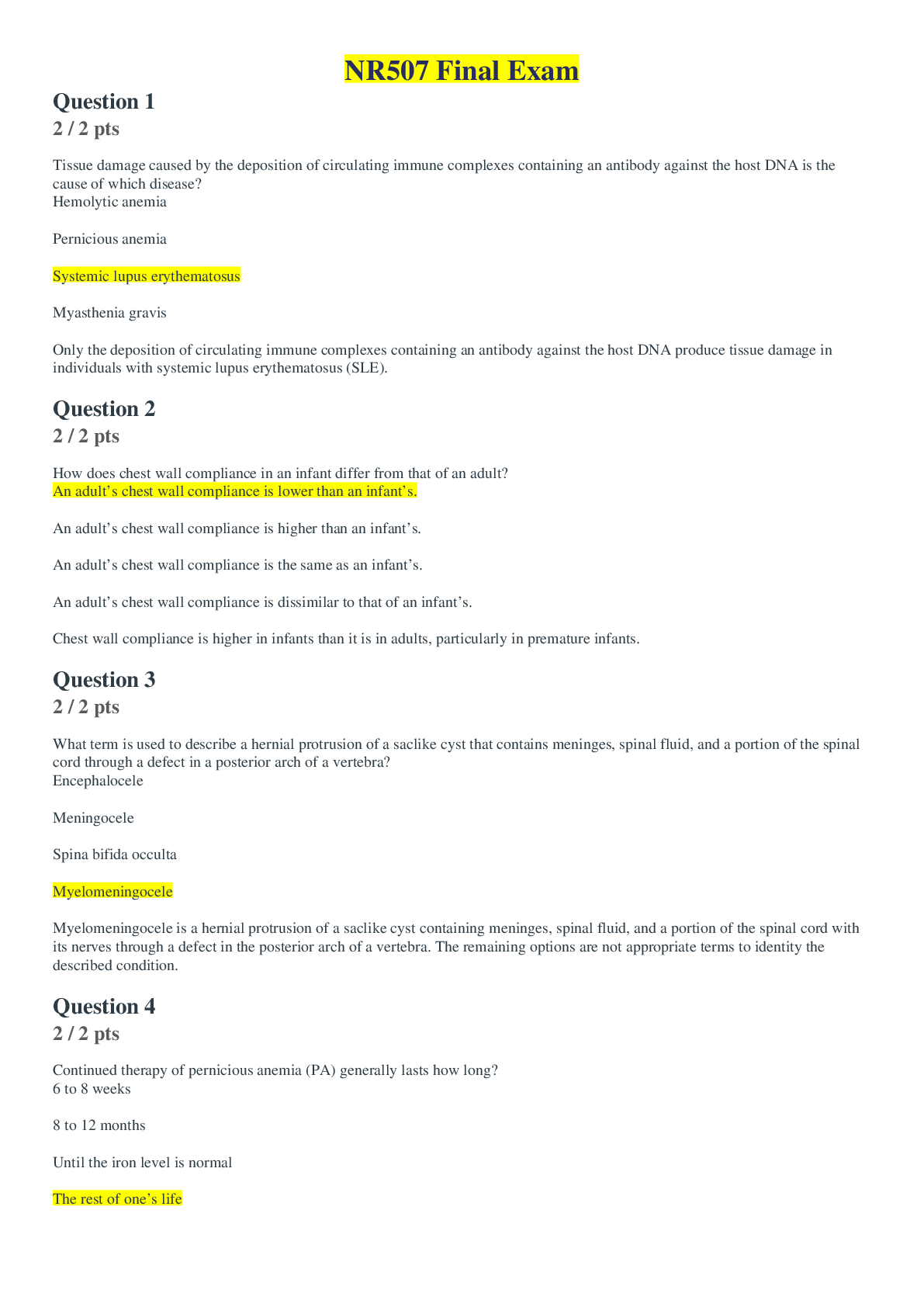
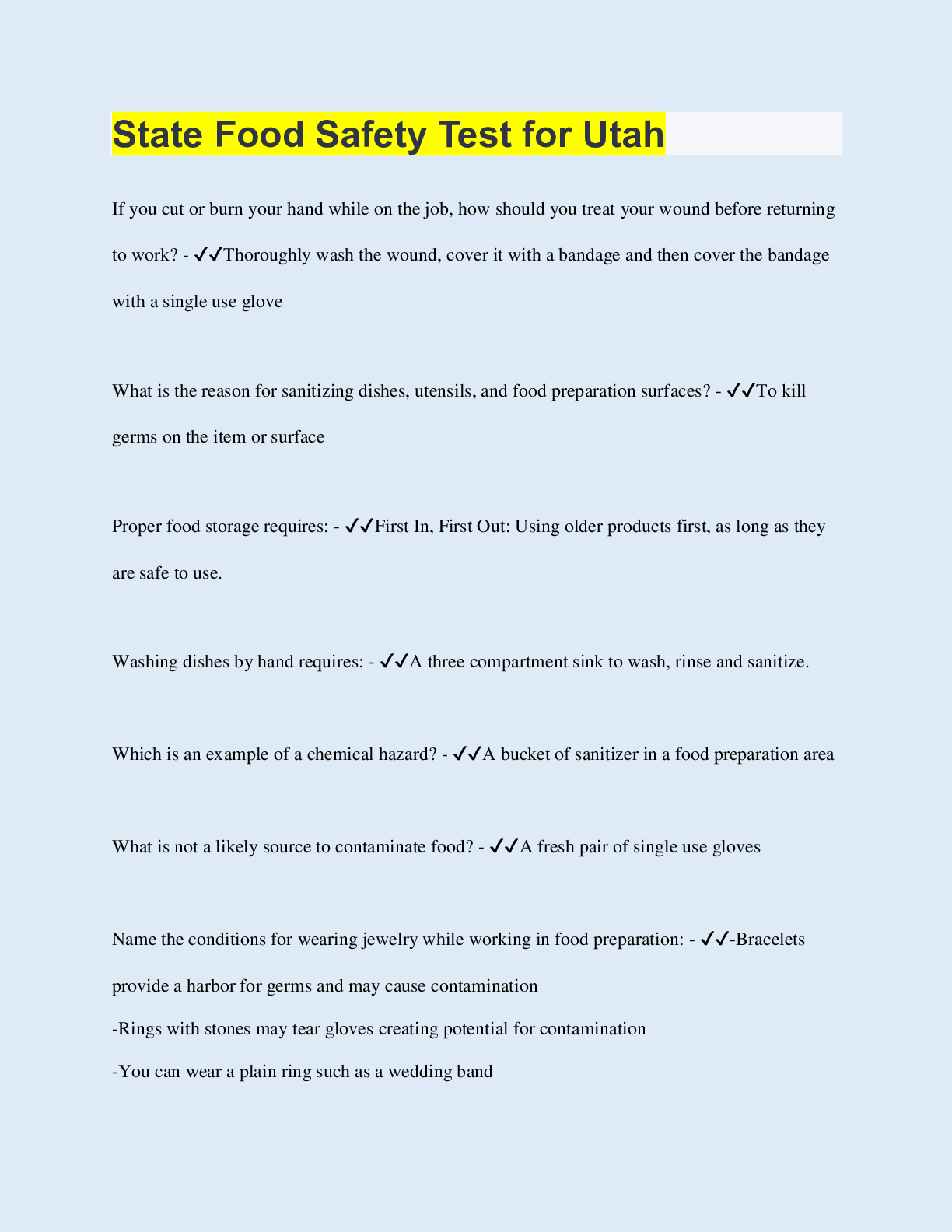

 (1).png)
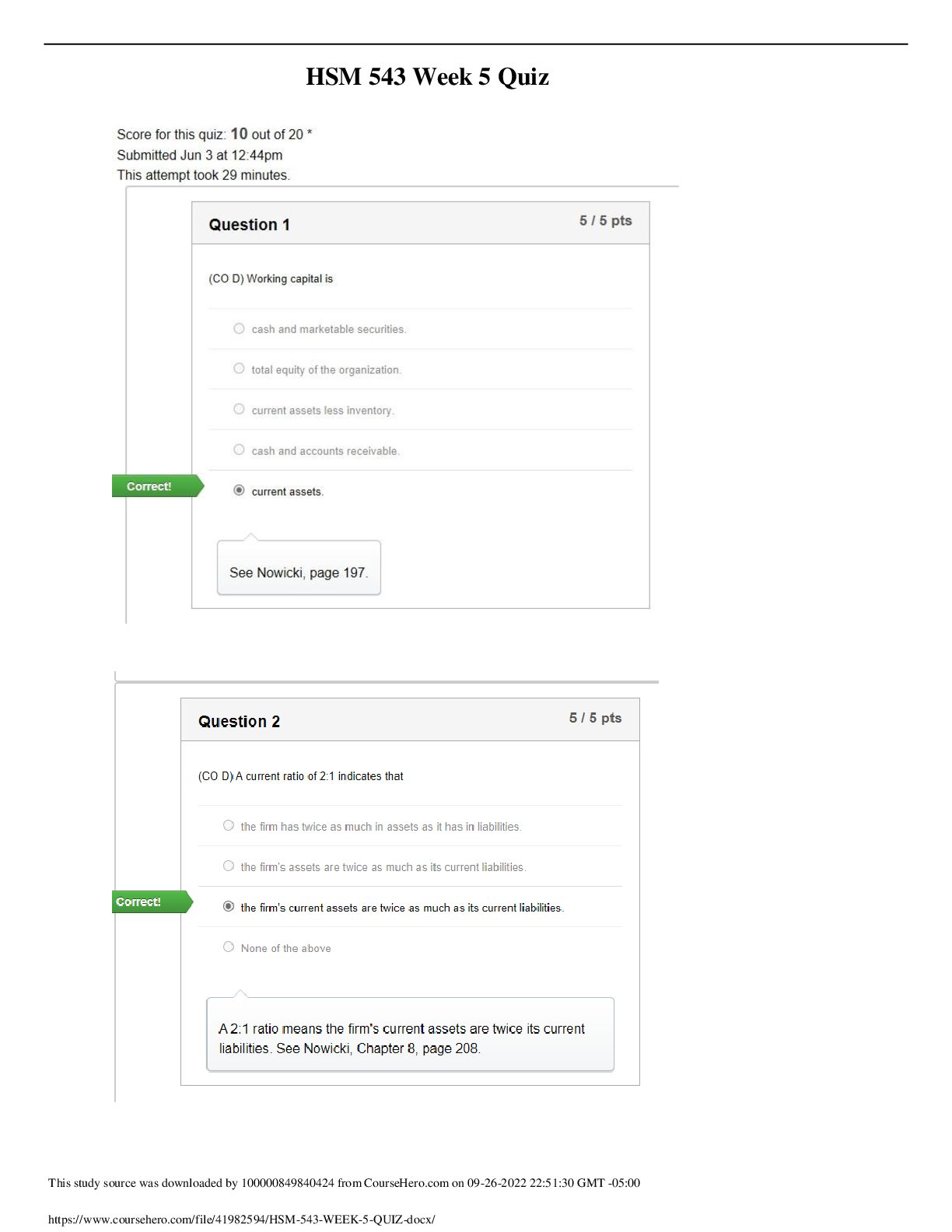
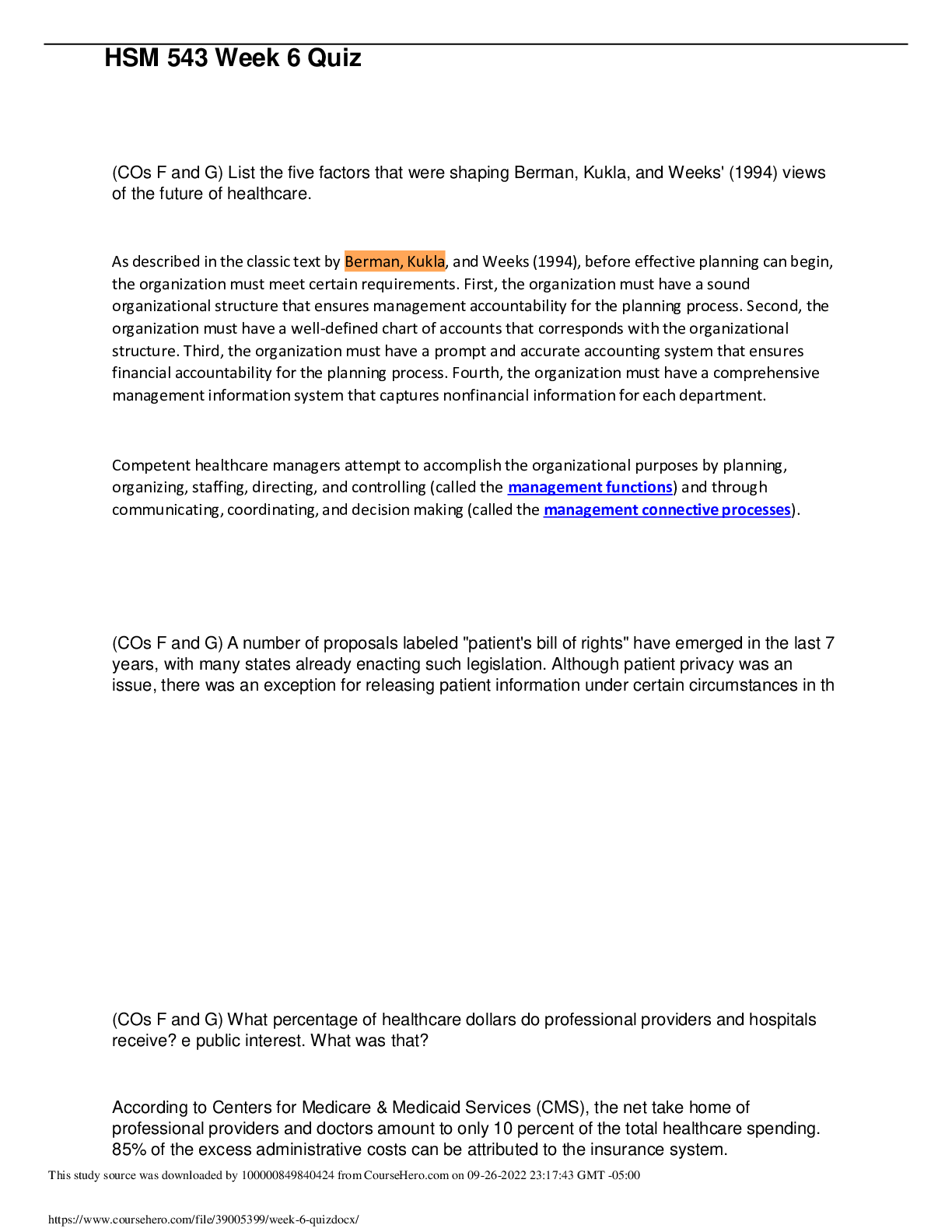
.png)


